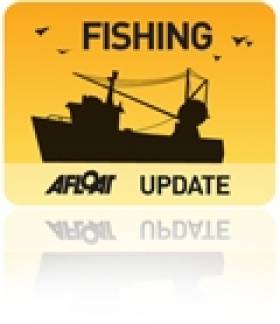Displaying items by tag: Lisheen
West Cork Fishing Village is Youtube Hit With Chapin Carpenter's 'Come Darkness, Come Light'
#fishing – A small fishing community in West Cork is hitting the video headlines this week following the intervention of a five times US Grammy Award winner about a song of hers they recorded to raise money for a local charity writes Tom MacSweeney.
The children of Lisheen National School, led by their teacher Niamh McCarthy, near Skibbereen in West Cork, recorded a CD to raise funds for the local transport scheme taking cancer patients to Cork for treatment. They appeared on RTE Nationwide, this week, after which a viewer and a fan of the renowned American singer/songwriter Mary Chapin Carpenter, sent a note to her that the children had recorded her song 'Come Darkness, Come Light' for their Christmas CD and a video to go along with it, which is on YouTube.
Mary Chapin Carpenter looked it up sent out a Tweet and re-tweeted a link to the video, with the message: 'Best early xmas gift...children of Lisheen Nat'l School (West Cork) performing Come Darkness, Come Light."
Mary Chapin Carpenter is a five-time winner of Grammy Awards and was inducted into the Nashville Songwriters Hall of Fame in 2012.
The teacher, Niamh McCarthy, said: "Imagine, she is a five-times Grammy Award winner and she liked what the children in Lisheen, a school in West Cork, what our kids did. It is unreal the reaction. The video has gone viral as a result. It is worth going onto her Facebook page to read the comments from her fans about our children! Unreal. Our video is gone viral and we have had CD sales to the States as a result. Just posted to Alaska and Minnesota this morning!
The pupils recorded the CD of Christmas Carols to raise money for the community's Cancer Connect charity which is a local transport scheme taking cancer patients to Cork for treatment. The video tells the story of the day of the CD recording in the local church.





























































